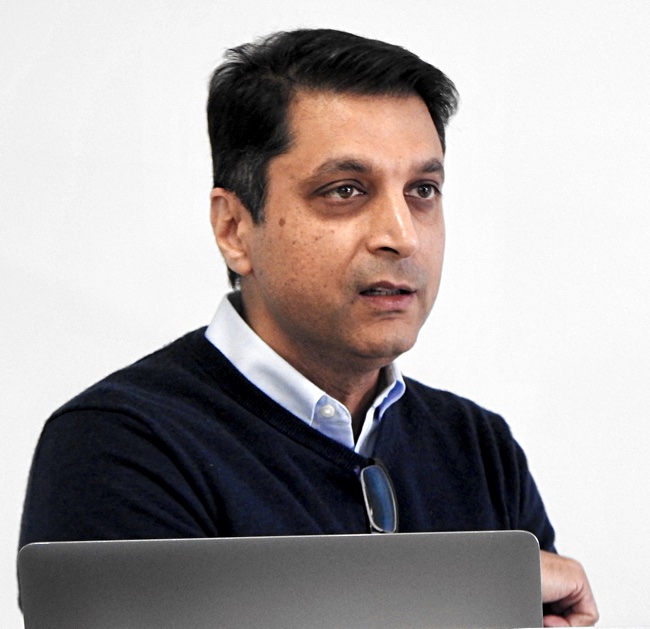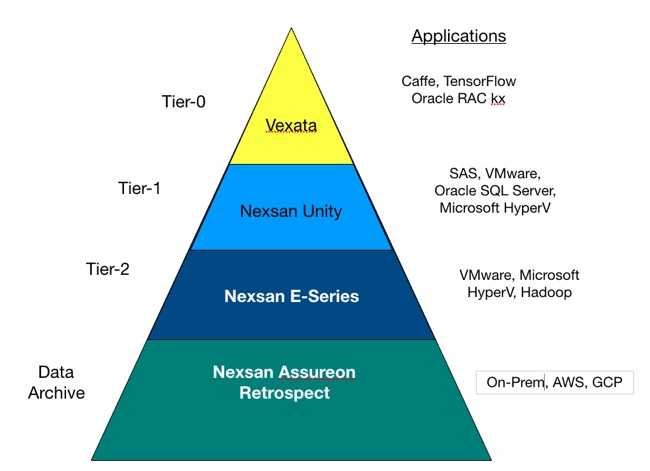StorCentric looks to move ahead with QLC flash and add cross-product backup to the cloud as it integrates its four acquisitions. These were our takeaways from an interview with CEO Mihir Shah and CTO Surya Varanasi in Silicon Valley this week.
StorCentric was founded in 2018 as a private equity investment vehicle for Drobo, a consumer storage supplier. In August 2018 the venture-backed firm bought the Nexsan storage array business and this summer it acquired Retrospect, a backup company and Vexata, a struggling NVMe-oF, all-flash array startup.
This four storage properties combined have one million customers, mostly through Retrospect and Drobo, in more than 100 countries. StorCentric also claims 40,000 enterprise customers and $50m in annual revenues. The product lines inherited from the four acquisitions have separate engineering teams and are being developed under a technology roadmap.
In Retrospect

Retrospect backs up virtualized servers; the 20 year-old company has sold 500,000 licenses with 100PB of data protected and will become a cross-product backup facility covering Drobo, Nexsan and Vexata. StorCentric will add Retrospect backup to AWS and Google Cloud Platform. It can also be used to move data between StorCentric’s arrays.
Drobo has more than 400,000 customers and StorCentric will add a faster, bigger business-class iteration.

There are three Nexsan array products, Unity, E-Series and Assureon, spanning medium and large enterprises. The high performance Unity file and block array will be developed with a software-only product deployable on X86 servers. Unity will be optimised for NVMe drives and quad-level cell flash. (StorCentric and Dell EMC are in dispute over the Unity brand name but, Shah says, Nexsan used it first.)
The dense E-Series can store 2.5PB of block data in a 12U enclosure. QLC flash will be supported using 2.5-inch drives in the first quarter next year. Varanasi said the E-Series software will reduce the amount of writes going to the QLC flash.
The Assureon archive object store will extend to archive data in the public cloud as a disaster recovery copy. It will be deployable as software on any x86 server and also in the cloud.
Vexata sits at the high end of StorCentric’s line-up. Varanasi said the company ran into problems because the sales cycle for its array took up to 18 months. Few sales resulted as Vexata burned through its cash.
According to Varanasi, the 4-node Vexata system can match the performance of the 4-node Oracle RAC and is 30 per cent cheaper. Its roadmap includes an entry-level dense system with 1PB in 6U using QLC NAND. This will have 50 per cent of the current TLC flash system performance at less than half the price, Varanesi said.
As with the Nexsan arrays, Retrospect will provide Vexata backup to and disaster recovery in the public cloud.
Shah said StorCentric had a strong focus on customer satisfaction, a land and expand customer account strategy and a focus on acquisitions and partnerships.
Our impression? This company knows where it’s going, has great channel up-sell and customer cross-sell opportunities, and has to show it can take advantage of these opportunities.







